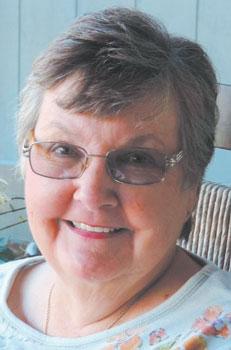 Now that Hope Mills Lake has finally returned, an equally long journey may be coming to a fruitful conclusion: the struggle to open a museum dedicated to sharing the story of the old mill village that today’s town of Hope Mills grew from.
Now that Hope Mills Lake has finally returned, an equally long journey may be coming to a fruitful conclusion: the struggle to open a museum dedicated to sharing the story of the old mill village that today’s town of Hope Mills grew from.
Pat Hall and the Hope Mills Historical Preservation Commission have been working with various pieces to make the museum a reality, and with the lake finally restored, she’s hoping things will begin to move quickly so the museum can open its doors to visitors within a year or more.
“Our goal is to preserve the history of the mill village and educate people about a lot of things that happened here that people are completely unaware of,’’ Hall said.
Prior to the Civil War, Hope Mills was home to the largest textile mill in the state, which stood in what is now a wooded area near the entrance to the Clifton Forge subdivision that sits by the restored lake.
The mill was destroyed by General William T. Sherman’s army when it came through the area in March of 1865.
The long-range plan is to turn some seven acres of land where the mill once stood into Heritage Park, which would stretch from the Clifton Forge entrance all the way back to Main Street and the old Episcopal Church and parish house.
The town acquired that area some years ago with the intent to use it for cultural purposes, possibly a museum. But a variety of delays forced Hall and her committee to seek an alternative, and it fell into their lap not long along when a house in the historic district near the intersection of Trade and Main Streets with a view of the lake went on the market.
“We called the realtor, took it to the town and said please look at this and consider it for a museum,’’ Hall said. “They did and bought it.’’
Now with a place to actually put memorabilia on display, the committee still has a good bit of work left to tackle, Hall said. The house will require some renovation, mostly to get it up to accessibility standards required by the Americans with Disabilities Act.
They also need to compile and catalog the many items they’ve acquired over the years that may be on display in the museum, which will be designed with the goal of telling the story of the mill village.
The town provided a collection of written records, she said. Much of the memorabilia came from Eddie Brower and the late Hope Mills mayor, Eddie Dees, Hall said. Hall added that after becoming mayor, Dees uncovered a heritage plan the town had commissioned some years ago that had gotten lost. Much of the information in that document has been guiding the current committee on how it will preserve the history of the mill village.
Another Dees innovation that has helped the gathering of living history was his idea to hold a reunion of mill workers during the town’s annual Ole Mill Days celebration.
“We held the first reunion in 2008,’’ Hall said. “That has been a popular part of Ole Mill Days in October. The attendees have items like trophies, rings, jewelry and awards they received when they worked at the mill. They have been bringing some of that to the reunions and donating it to us.’’
The next big challenge for the committee after sorting out all the things that have been donated will be the actual construction of display cases and finding the best way to present the town’s story in museum form.
“We’ve had volunteers offer to build displays,’’ she said. “One of those volunteers is the person that works at the Museum of the Cape Fear (in Fayetteville),’’ she said. “We’ll reach out to other local museums for any advice they have.’’
The greater long-range project will be the construction of Heritage Park. Hall said there are much larger items they hope to put on display there, including the gates from the old dam and other larger pieces of equipment associated with the mills that were a central part of life in old Hope Mills.
When the whole project is done, Hall said Heritage park will likely include trails along the creek bank, canoe slips, fishing piers and picnic tables. There will be a hanging bridge over the creek where people can walk to the property where the old Episcopal Church and parish house stand.
Hall thinks it’s fitting that much of the completed project will be just a short distance from the Eddie Dees Building, which stands with his name on it at the corner of Main and Trade Streets.
The former mayor made the return of the lake a major part of his years in office. “It’s like he’s still guiding us,’’ Hall said. “A lot of years of effort, perseverance and tenacity are behind that little mill house that hopefully will be our museum.’’
If anyone has items they would like to donate for possible display in the museum, contact Hall at 910-308-8663.
Photo: Pat Hall

 How to resolve AdBlock issue?
How to resolve AdBlock issue? 








